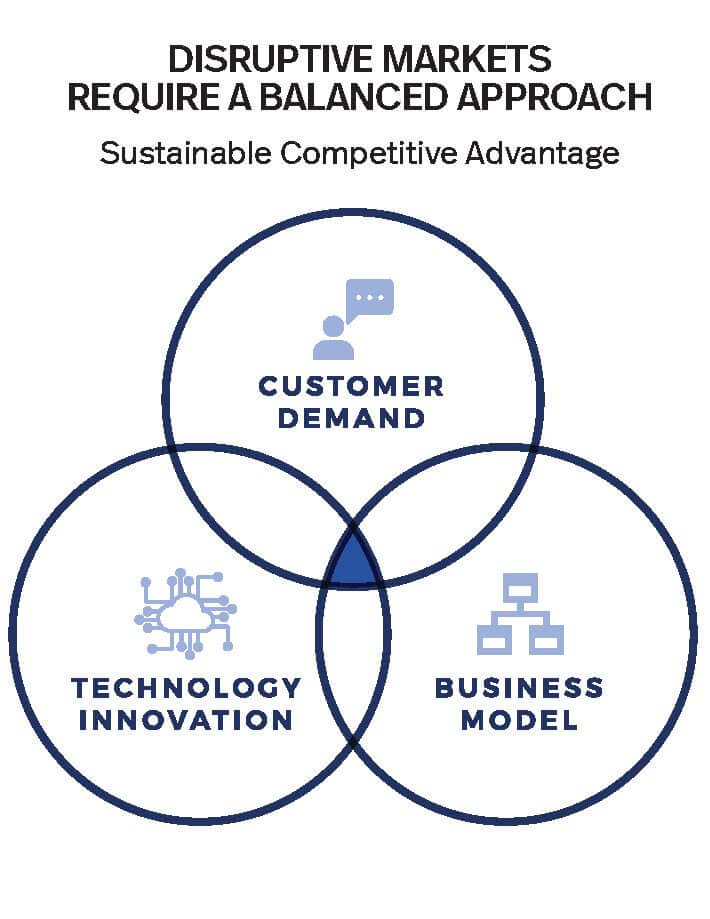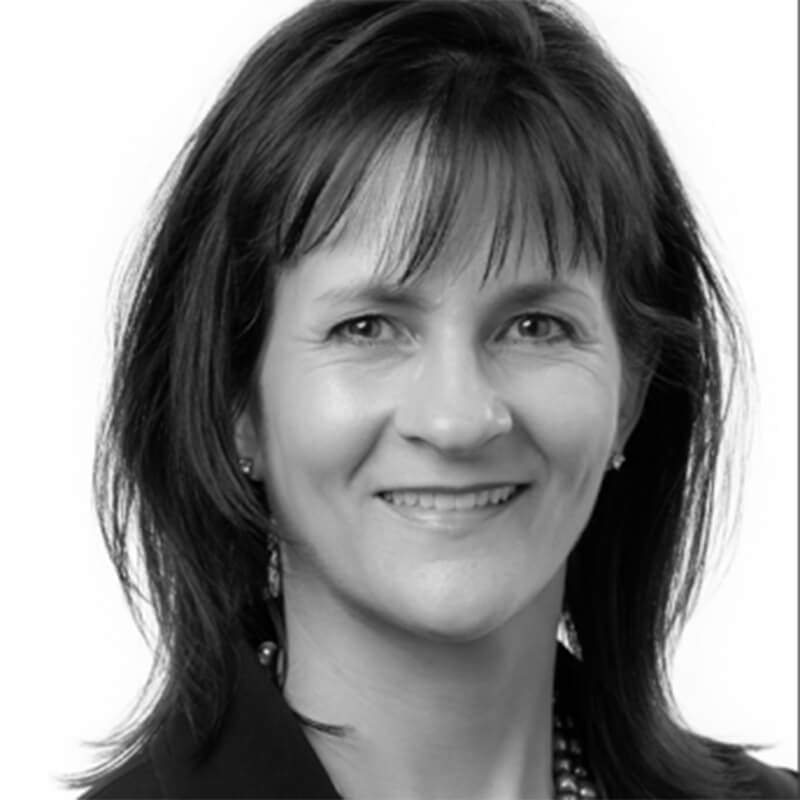A Strategy to Turn Digital Disruptions into Opportunities
by Heather L. Wishart-Smith
VP Jacobs’ Connected Enterprise
(JCE)
A recognized leader in design, engineering and technical services, Jacobs has transformed its portfolio to focus on technology-driven innovations, helping its business and government clients overcome disruptive challenges such as resource scarcity, security and resilience threats.
We spoke with Heather L. Wishart-Smith, senior vice president leading Jacobs’ Connected Enterprise strategy for the firm’s Buildings, Infrastructure and Advanced Facilities business to learn how Jacobs is leveraging artificial intelligence, big data analytics and automation to advance critical infrastructure and operations for its clients around the world.
DesignIntelligence (DI): How does cybersecurity fit into today’s digital disruption strategies?
Heather L. Wishart-Smith (HLW): Cybersecurity is a necessary measure as we move into a new world of connected and autonomous vehicles, buildings and smart cities. These new opportunities for technology and data can be very exciting, and it can be tempting to jump into development at the exclusion of some important guiding principles. It is vital to keep your data and systems protected as well as to implement a true IoT [internet of things] and technology plan for data collection.
Jacobs’ Connected Enterprise is a strategy for contending with digital disruption. It was initiated in 2016 following the acquisition of Van Dyke (a 500-person cyber security firm). Our goal is to take advantage of the movement in this industry toward digital disruption and the need for more fully integrated solutions. Jacobs is uniquely positioned to provide both the digital capability as well as the deep domain expertise, which then allows us to help our clients make better business decisions.
DI: What is your organization’s focus?
HLW: We are focused on four different solution areas: connected mobility, connected places, connected assets and connected delivery. These solution areas are supported by five innovation hubs — cybersecurity, internet of things, predictive analytics, applied geospatial science, and automated design. We are currently accelerating the existing innovation in those five different areas through a wide range of initiatives and client engagements, as well as through a robust internal program to accelerate a culture of innovation among our employee community.
For some clients, we help them create a technology strategy or digital master plan that is ideally a full-lifecycle strategy for their operations. For others, we’re helping them focus on a single asset (such as a building), as it is important to make the best decisions from the perspective of the lifecycle of a building as opposed to just the initial capital cost.
DI: How do you think IoT and digital disruption will change the A/E/C industry?
HLW: Professional practice in A/E/C is going to be changed by IoT and digital disruption in many ways. The first way professional practice is changing is integration of solutions to include technology. There are so many different opportunities now with data, sensors, digital twins and more. In the past, Operational Technology was not really a factor, and Information Technology was considered separate from the built environment. But as the built environment becomes more integrated, it often needs to be supported by enabling capabilities like cybersecurity, data analytics and geospatial. Back in 2015, Jacobs had separate lines of business for buildings and infrastructure. They were different performance units with different management structures, and then the decision was made to bring them together. At the time, this was revolutionary and there was some pushback. People thought their DOT clients weren’t really interested in buildings, and their buildings clients weren’t really interested in transportation. It was a forward-thinking step because we have seen the industry moving toward integrated solutions.
The second way professional practice is changing is in automation, particularly of design, construction, operations and maintenance. There are also other automation factors in terms of the supporting environment, such as HR and accounting. Some in A/E/C may feel threatened by this, but it is important to view this as an opportunity to reserve high-level human input and direction for the most critical needs. This provides better solutions for our clients because automation can offer rapid optioneering. It also helps to address STEM and trade deficits; as a country, we will suffer in the near future because we’re not graduating enough STEM professionals or trades for construction, operations and maintenance.
The third way the professional practice has already changed and will continue to change is that old hierarchies are no longer as relevant or as important as they once were. Four-year college degrees are no longer sufficient. By the time a graduate leaves college, much of what they’ve learned in their first couple of years has become outdated. In light of this, we all need to have an innovation mindset and a commitment to lifelong learning in order to stay relevant. Another example is that start-ups are innovating, and they’re advancing ahead of many organizations that have been in business for much longer periods of time, so duration is no longer as relevant. Those in the industry who cling to old ways of doing business and don’t innovate are likely to be left behind — and quite possibly they may also not survive.
DI: What opportunities do you see technology creating for A/E/C firms?
HLW: One is closing socioeconomic imbalances; that divide has been significant and continues to widen, particularly in our country. We view this as an opportunity to try to address some of those imbalances and help to level the playing field. We feel that certain opportunities like smart cities create an opportunity for our clients to close that gap with education by providing more access to wireless services and technology. Some developing countries have gone directly to wireless in a way that is a lot less infrastructure-intensive. Certainly, there are also concerns about technology creating more of an imbalance, particularly as automation can take over some of the more manual or repetitive labor, but that’s why we have to be very focused on education and the important role it plays.
Another opportunity relates to environmental protection. There are so many avenues to address environmental issues like decreasing traffic congestion, improving air quality, and improving water quality through data-driven change. There are case studies in places like Cincinnati where we’ve used IoT to help them decrease the amount of untreated or partially treated sewage that is released as a result of their combined sewer overflow by half a billion gallons a year, while saving hundreds of millions of dollars from using their existing infrastructure more wisely rather than adding capacity.
Safety is an area with many different opportunities for digital solutions to assist. They include everything from laser scanning technology that prevents people from having to go up at height or into heavily trafficked areas, to highway staff using virtual and augmented reality so they can learn more about a construction zone on a roadway without having to be put in harm’s way to start. Another is the use of drones to do an inspection or to help with things like hurricane response. Approximately 95% of traffic accidents are caused by human error, so removing that component creates an opportunity to help improve safety. We also need to be careful from a safety perspective with challenges. Jeep had to recall a number of their vehicles because it was proven that hackers could take them over, and there was also the highly publicized situation with Uber where one of their vehicles killed a pedestrian. Unfortunately, cybersecurity is an afterthought in many cases. Many people aren’t aware that the Target identity theft breach where so many credit cards were stolen occurred through a hack related to the HVAC system.
DI: What are some of your organization’s data-driven connectivity initiatives?
HLW: Regarding connected places, “smart cities” is a popular term, but we view them as places that can also include areas like military bases, airports and stadiums. In India and Georgia, we have created apps to help with the connectivity between the citizens and the city services. Connected mobility is very related to connected places, with one example being our Project EDMOND project. We’ve taken the data from 400 million multimodal journeys, and we’re using it to gain previously unattainable insight into crowd behavior and how people travel around London.
On the connected-asset side, we have a case study with NASA at their Langley site in Hampton Roads. We have installed and now monitor 120,000 sensors that are used to measure and detect changes in everything from acceleration to temperature to vibration that will allow more of a predictive maintenance model rather than just a preventive maintenance model. We didn’t start out with 120,000 sensors, however; we started with a proposal to do a few hundred, and we built from there over the last four years.
Thinking big, starting small, and scaling fast allowed us to develop a proof of concept to make sure it made sense, because sometimes you will fail. When it comes to failures, you always want to do so quickly and on a small scale to ensure you don’t end up wasting time and resources. In talking with our clients, sometimes they ask us to start with something small like their digital roadmap for one plant, and then eventually we expand it as a prototype for others.

DI: With so much technology available, how does an organization decide which tools will best serve them?
HLW: There are so many great ideas out there, but unfortunately they can’t all be done. It becomes a matter of prioritization. The pictured Venn diagram was created by my colleague Vincent Mihalik to communicate the fact that a balanced approach is necessary to realize a sustainable competitive advantage. Many people focus on technology innovation, because it’s fun, exciting and new. But if you’re focusing on technology for technology’s sake, it will not be sustainable. The other two components of the Venn diagram are the business model and customer demand. We have to ensure that a solution makes sense for our clients, that it makes sense for our organization, and that it’s going to be profitable and scalable; we don’t want to invest a whole lot in a niche product or solution that’s not going to be scalable or profitable.
We are transforming our culture to change the way we think about our role in helping clients improve their performance. In today’s world, market leaders who ignore the digital revolution will become irrelevant — even disrupted themselves — and pushed out of the marketplace. Our goal is to help our clients harness the power of digital technologies and become a disrupter in their own industry.
Heather Wishart-Smith is the senior vice president leading innovation and strategy and growth of Jacobs’ Connected Enterprise (JCE) for Jacobs’ global Buildings & Infrastructure line.

